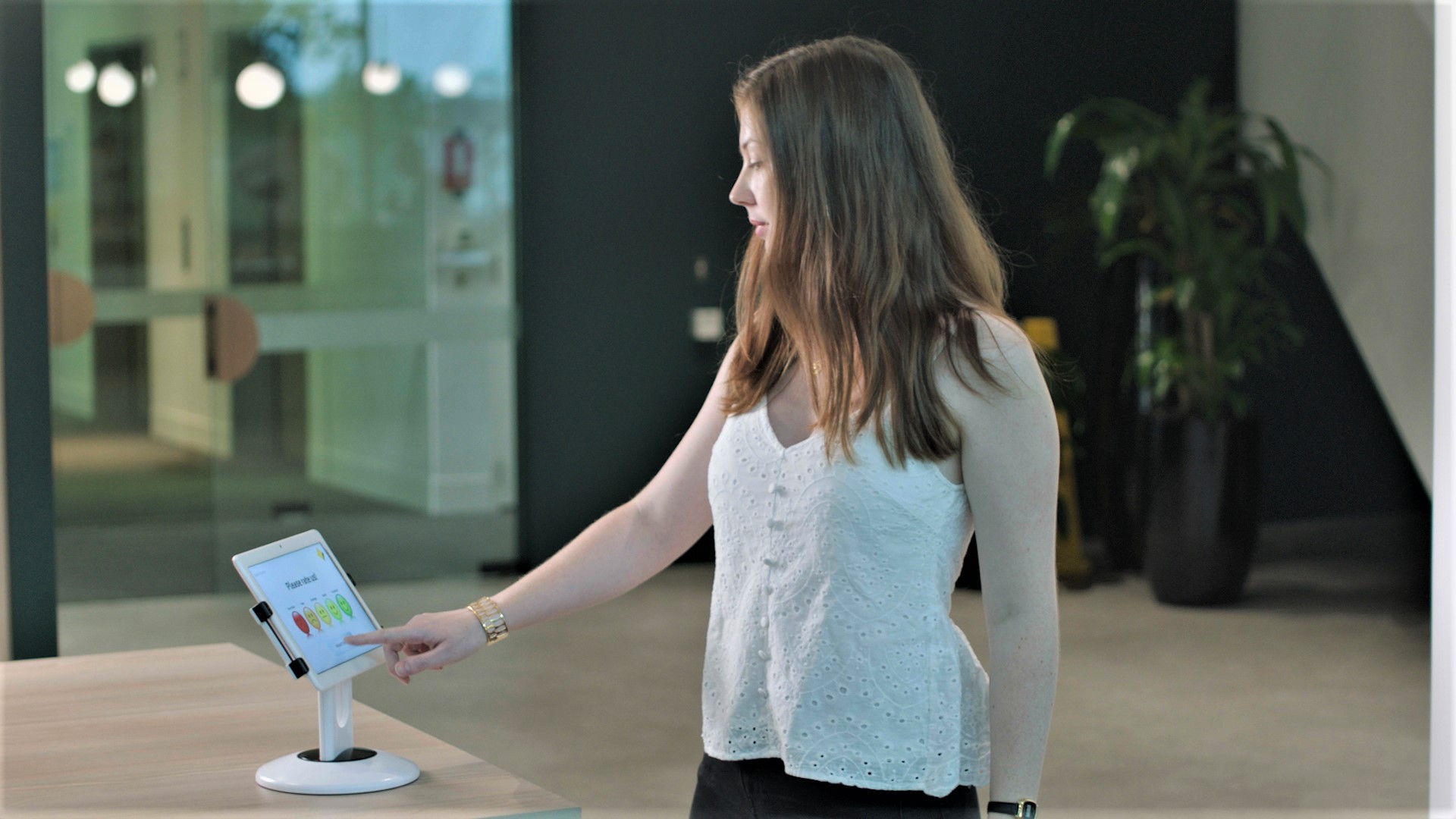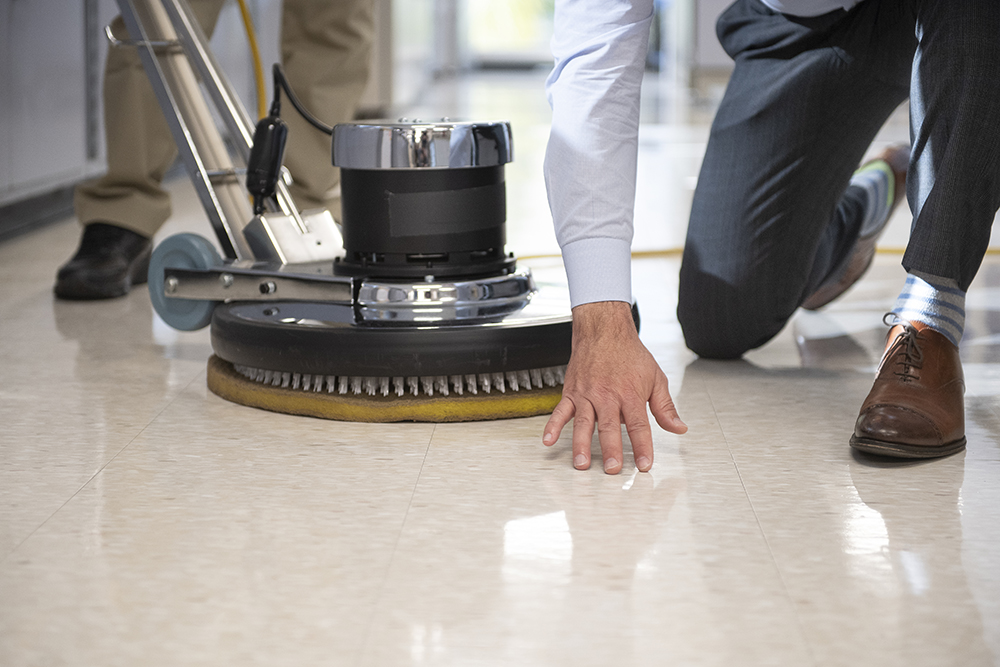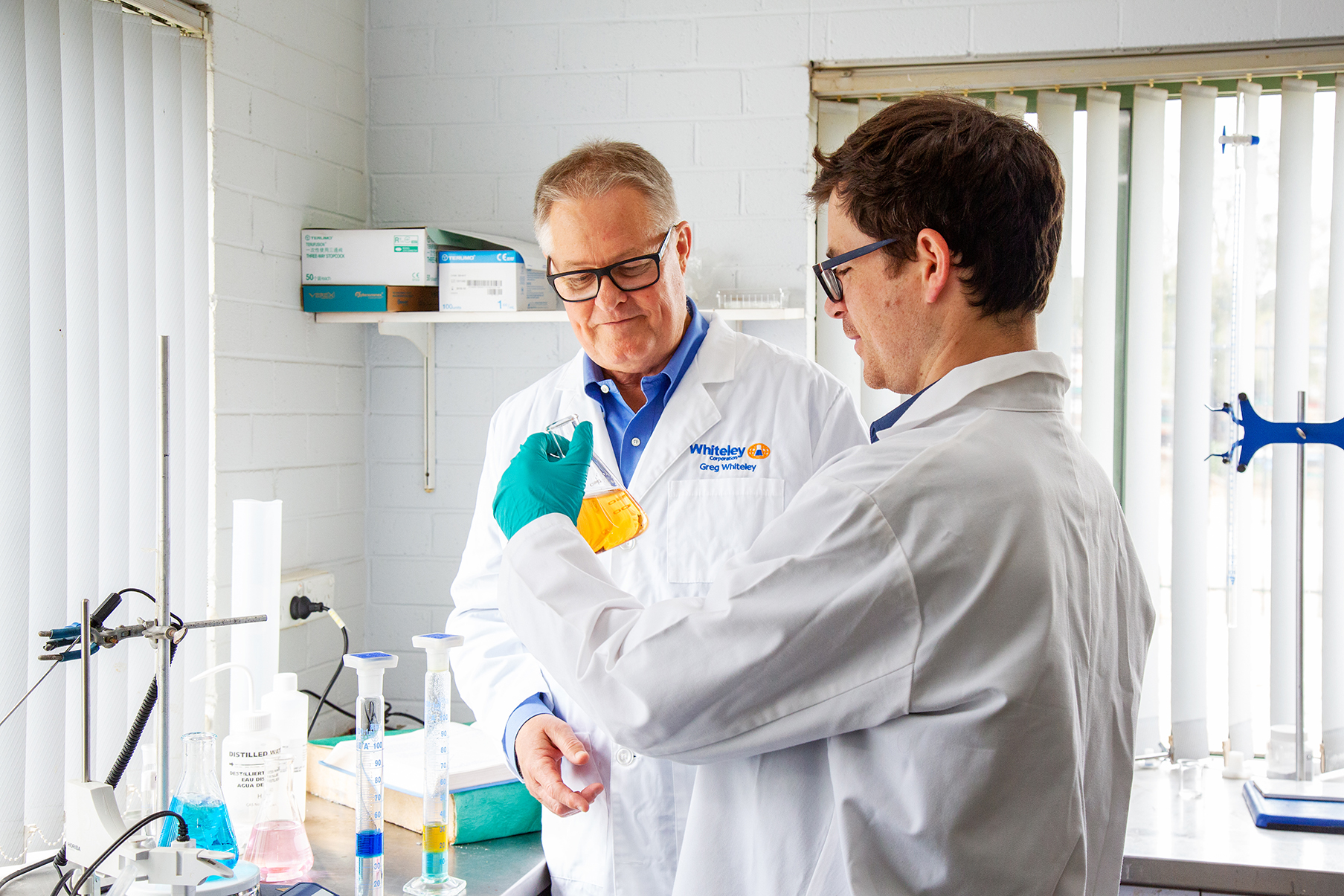
Clients are crying out for innovation, and BIC Services have answered that call with the Interactive Customer Experience Platform.
Chief Information Officer, Tino Stanojevic, began working on the project in May 2019, wanting to develop a real-time customer-centric service delivery and service management system.
What he could never have predicted is that the project would need to be accelerated and deployed to help cope with a global pandemic.
The evolution of ICXP
BIC Services developed ICXP to deliver a more efficient and customer-centric service model for clients. Instead of working on repetition, ICXP empowers service teams to offer real-time responses to client requirements.
The technology works via a combination of Customer Experience Kiosks (tablets), wearables, Bluetooth Beacons and IoT sensors.
Building occupants can use Customer Experience Kiosks to make a service request, and the closest technician will be alerted.
They can also use the Kiosks to rate performance, giving BIC Services’ clients the ability to trend performance levels over time, opening a whole new layer of transparency when it comes to performance reporting.

“Transparency creates solid and long-term relationships. We don’t want to hide mistakes or avoid the hard conversations. The data we’ve gathered through the ICXP has been invaluable in tweaking service delivery and setting ourselves up for performance improvements,’ said Chief Executive Officer, Tony Gorgovski.
Creating Efficiencies and Cutting Costs By Rightsizing Service Levels
Under and over servicing creates problems with efficiency and service delivery. ICXP addresses both issues and cuts costs in the process
The system uses a range of IoT sensors to measure Asset Utilisation (e.g. foot traffic, bathroom use). The Platform also tracks service team movement and provides heat mapping of service levels.
The BIC Services team then uses this data to create Asset Profiles and determine servicing schedules for each asset.
Service teams can even set up alerts based on usage levels. So, if an asset needs to be cleaned after 100 uses, the closest technician will receive an automatic alert directing them to that asset as soon as the specified threshold has been exceeded.
The system ensures proper servicing while minimising inefficiencies created by overservicing. The Platform also allows for building occupants to raise specific issues, creating a proactive system of service where resources are used efficiently, and clients control service delivery.
Initial client investment will be offset by resource and time-savings over the lifespan of the contract. For long term contracts, BIC can absorb costs.
“We know how important this technology is, for our clients and for our service delivery. We’ve designed it to provide ROI, so cost doesn’t need to come into the equation for us or clients,” said Gorgovski.
Coping with COVID-19
Necessity is the mother of invention, and Stanojevic and his team quickly set about readying ICXP for the challenge of COVID-19.
“The pandemic was declared during the early stages of deployment. Our immediate thought was that it would be a roadblock in development, but it has actually sped things along,” said Stanojevic.
“The Kiosks are now voice-enabled, so the system is entirely touch-free. They are also connected with the COVIDSafe app, so we get anonymous alerts if an affected person has been in one of our service areas, allowing us to take appropriate action and disinfect the space.”
The Kiosks can also help in enforcing social distancing by doing smartphone counts in each room. If the room is over-capacity, the Kiosk will display a warning.
The Platform will be especially helpful in dealing with End-Of-Trip (EOT) facilities. Safe Work Australia sent out a directive for all shared showers to be cleaned after each use. Usually, this would mean placing a dedicated technician inside each facility, but ICXP alleviates that need.
“ICXP uses small motion sensors in the showers to detect and record usage. The Kiosk displays the shower status (cleaned after use / not cleaned), and the system dispatches notifications to cleaners when showers require cleaning,” said Stanojevic.
“Custom rules mean cleaning requests/notifications can be dispatched immediately after each use during EOT peak hours, while during off-peak periods, requests can be dispatched after 50 per cent of the showers need cleaning.”

Expanding ICXP into open-space management
ICXP was first deployed at the Commonwealth Bank building South Eveleigh, NSW. This is the perfect space for the first iteration of the ICXP as BIC Services had a dedicated team in place to service the building, so technicians are always on hand to respond to ad-hoc requests.
Rolling out the Platform for the CBRE/Place Management NSW (Places) contract presented a new set of challenges. The contract calls for service provision across a range of built environments in a large area precinct. Service teams need to work across large distances, making it difficult to facilitate immediate responses to ad-hoc requests.

Asset Profiling helps to overcome the issue of distance and the lack of a stationary workforce. BIC Services uses Profiling to determine when buildings or spaces receive the highest levels of use to ensure those areas are serviced at the right times. It also means that servicing schedules can be set, so technicians are within range when ad-hoc service requests are most likely to be made.
“Essentially, the ICXP takes the guesswork out of servicing the Places contract. Asset Profiles mean site managers can create schedules tailored to customer’s actual usage based on historical data. The Platform even allows for customised rule inputs, so a rule could be set that specific assets are given immediate issue response status,” said Stanojevic.
The Kiosks also had to be updated to accommodate for use in a public space. Tablets are ideal for indoor usage, where power sources are readily available, and they are not exposed to the elements or risk of vandalism. For Places, Tino and his team quickly pivoted to virtual Kiosks.
‘Modern smartphones are ready-made QR code readers through their built-in camera applications. So, instead of using tablets, we used QR Codes which users can scan using their phones. The QR code will take them to a webpage, and they can input service requests and satisfaction scores, as if they were doing it on a Kiosk” said Stanojevic.
A Platform to build on
ICXP has been rolled out across two very different contracts, and the results so far have been heartening. But for the BIC Services team, it’s just the beginning.
“Tino and his team are just getting started in terms of delivering innovation to our clients. We’re looking into new markets and technology like ICXP is expanding our capabilities,” said CEO, Tony Gorgovski.
“Not only can we deliver a better, more customer centric day-to-day service, but we can also enjoy a more open, transparent relationship with clients. Our reporting systems are setting the standard in the industry, and clients appreciate the transparency we offer.”

“We’re nowhere near finished”, continued Stanojevic, “we’re just scratching the surface in terms of what ICXP is capable of, which the COVID-19 related upgrades have demonstrated.”
“The beauty of ICXP is that it is real-time, rule-based and very flexible, making it almost infinitely customisable. We can change outputs depending on client needs and space requirements. We see plenty more service scenarios and situations where the ICXP can improve outcomes. Our roadmap holds many exciting innovations.”
BIC Services’ commitment to investing in technology and innovation has paid off. The Platform has already delivered extraordinary client outcomes and it will be invaluable setting them up for a move into new verticals and spaces.
Learn more about the Interactive Customer Experience Platform
This article first appeared in the July/August issue of INCLEAN magazine




Gary Oskay on: Industry Leaders Forum: Wayne Hill, CEO, RapidClean Group
John Ford on: Industry Leaders Forum: Joe Camilleri, Managing Director, Central Cleaning Supplies
Jasmine Soh on: Empowering the Oceania Cleaning and Hygiene Industry: INCLEAN Unveils Its Unified Magazine